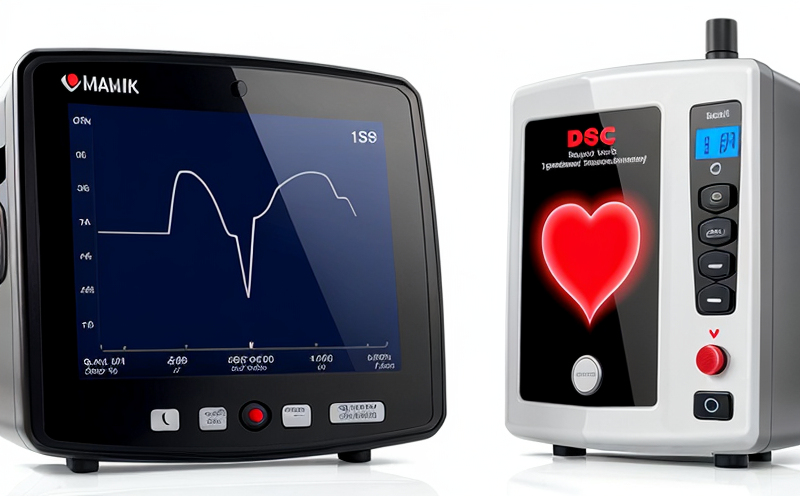ISO 5840 Bioprosthetic Heart Valve Durability Testing
The ISO 5840 series of standards is specifically designed for the bioprosthetic heart valve industry. This service focuses on durability testing, a critical step in ensuring the long-term reliability and safety of cardiovascular devices. This process ensures that the valves can withstand the rigors of human physiology over extended periods, without compromising performance or inducing adverse biological reactions.
The durability tests under ISO 5840 are conducted using specialized test rigs designed to simulate physiological conditions. These include cyclic loading, hydraulic flow testing, and biocompatibility assessments. The goal is to replicate real-world usage scenarios that the valves will encounter in patients over their expected lifespan.
For a typical test setup, the valve is mounted onto a rig capable of simulating the stresses it would experience during normal cardiac function. This includes pressure cycling, flow dynamics, and material fatigue studies. The testing can last for hundreds of thousands of cycles, depending on the design requirements and target durability claims.
The specimen preparation is meticulous. Valve leaflets are cleaned and conditioned according to ISO 13402-7:2016 standards before being mounted onto the test rig. This ensures that any surface contamination does not affect the outcome of the test. The testing apparatus used includes high-pressure hydraulic systems, flow meters, and data acquisition systems capable of capturing minute changes in valve performance.
The acceptance criteria for these tests are stringent. A valve must pass a minimum number of cycles without failure or significant degradation. If the valve fails to meet these standards, it indicates potential issues with design, material selection, or manufacturing processes that need rectification before product release.
Our laboratory adheres strictly to ISO 5840-1:2017 and subsequent amendments, ensuring compliance with international standards. This approach guarantees that the test results are reliable and can be trusted by regulatory bodies worldwide. The data generated from these tests is crucial for obtaining market approval and ensuring patient safety.
The rigorous nature of ISO 5840 testing underscores its importance in the medical device industry. By adhering to this standard, manufacturers ensure their products meet the highest quality and reliability benchmarks. This not only enhances consumer confidence but also contributes significantly to reducing the risk of adverse events post-market.
Industry Applications
| Application | Description |
|---|---|
| Bioprosthetic Heart Valve Manufacturers | Ensure durability and performance under real-world conditions. |
| Clinical Trial Investigators | Evaluate the long-term efficacy of new valve designs. |
| Regulatory Bodies | Verify compliance with international standards before market release. |
| R&D Departments | Optimize design parameters and improve material selection.|
| Procurement Teams | Select suppliers based on consistent high-quality performance. |
| Insurance Companies | Evaluate the risk associated with bioprosthetic heart valve failure rates.|
| Patient Advocacy Groups | Achieve more transparent and safer healthcare outcomes. |
The tests under ISO 5840 are widely used by manufacturers of bioprosthetic heart valves. These tests help in evaluating the durability, performance, and safety of new valve designs before they reach clinical trials or market approval. Regulatory bodies rely on these data to ensure compliance with international standards.
Quality and Reliability Assurance
The durability testing under ISO 5840 is a cornerstone of quality assurance in the bioprosthetic heart valve industry. It ensures that each valve meets stringent performance criteria, which is critical for patient safety and long-term health outcomes.
Durability tests simulate real-world conditions to identify potential issues before they become clinical problems. This proactive approach helps manufacturers catch design flaws or material weaknesses early in the development process. By ensuring consistent quality across all valves produced, these tests contribute significantly to reducing post-market failures.
The testing process is highly standardized and repeatable, which enhances confidence in the results. The use of international standards ensures that the tests are recognized globally, making it easier for manufacturers to comply with regulatory requirements in multiple jurisdictions.
Our laboratory employs state-of-the-art equipment and trained personnel to conduct these tests. We ensure that each valve undergoes thorough evaluation using the latest techniques and methodologies. This commitment to quality is reflected not only in our testing processes but also in our ongoing research and development efforts aimed at improving valve performance and longevity.
By adhering to ISO 5840 standards, we provide a service that enhances trust between manufacturers, regulatory bodies, and healthcare providers. Our goal is to contribute to the advancement of medical technology while ensuring patient safety and satisfaction.
Environmental and Sustainability Contributions
The durability testing under ISO 5840 plays a significant role in promoting sustainability within the bioprosthetic heart valve industry. By ensuring that valves are reliable over extended periods, we help reduce the need for frequent replacements, which is crucial given the limited availability of donor hearts used in transcatheter aortic valve replacement (TAVR) procedures.
The durability tests also contribute to reducing healthcare waste and associated environmental impacts. By identifying weaknesses early in the design phase, manufacturers can optimize material usage and improve manufacturing processes, leading to more efficient production and reduced carbon footprints.
Our laboratory actively supports sustainability initiatives by promoting energy-efficient testing protocols and minimizing waste during specimen preparation. We are committed to reducing our environmental impact while maintaining high standards of quality and reliability in the testing process.
The use of standardized testing procedures under ISO 5840 helps ensure that each valve meets rigorous performance criteria, thereby reducing the risk of patient complications. This approach not only enhances patient outcomes but also promotes a more sustainable healthcare system by minimizing unnecessary interventions and resource consumption.





